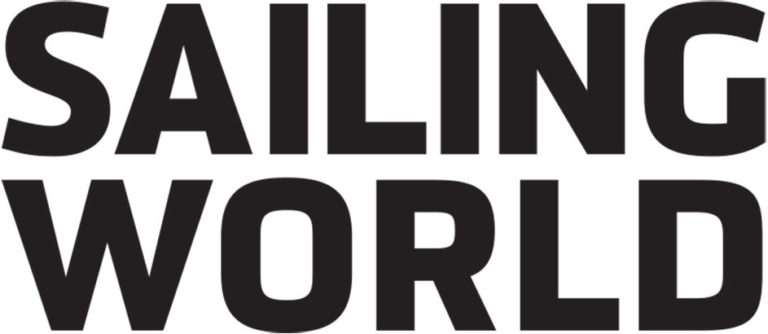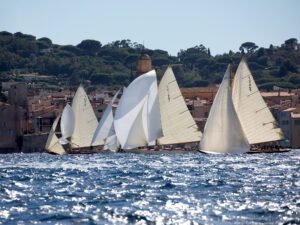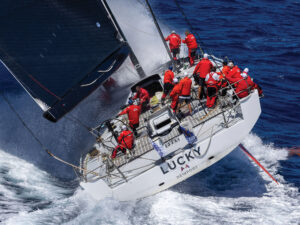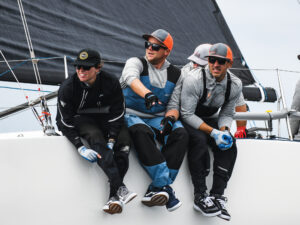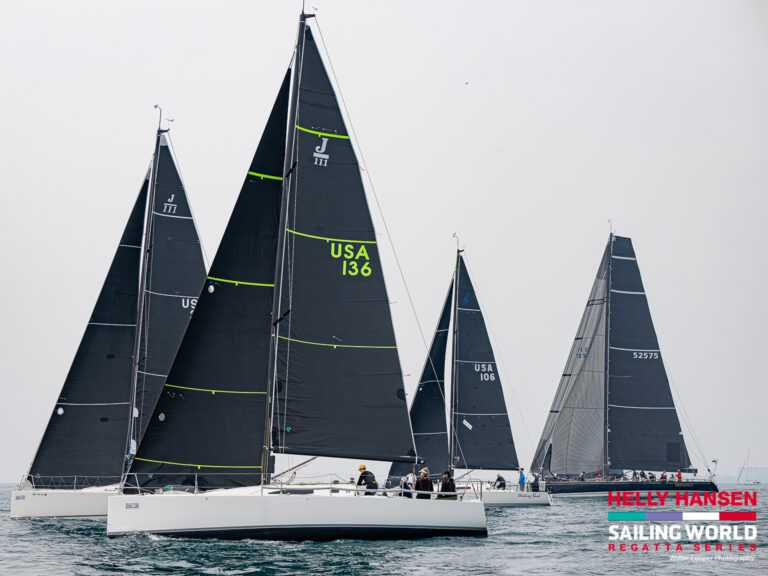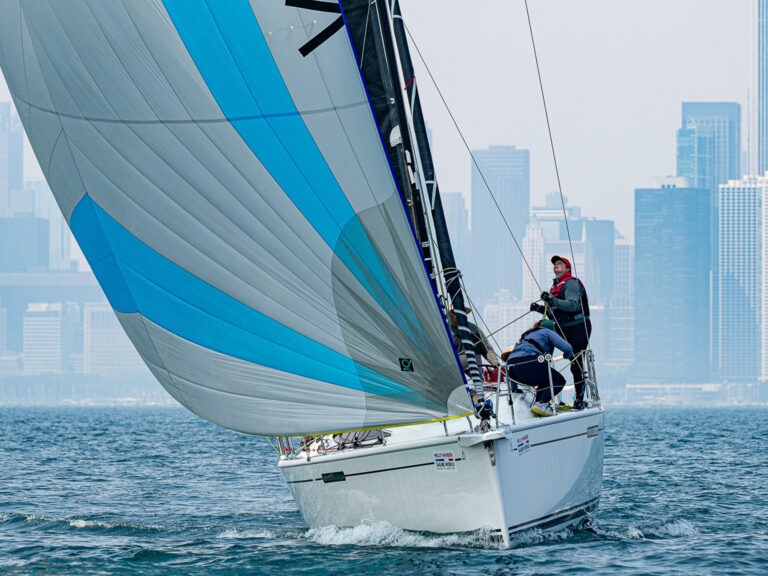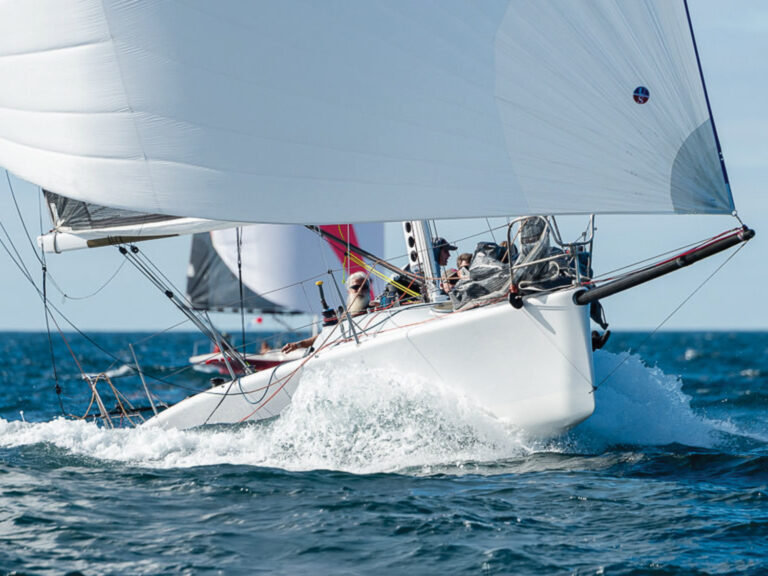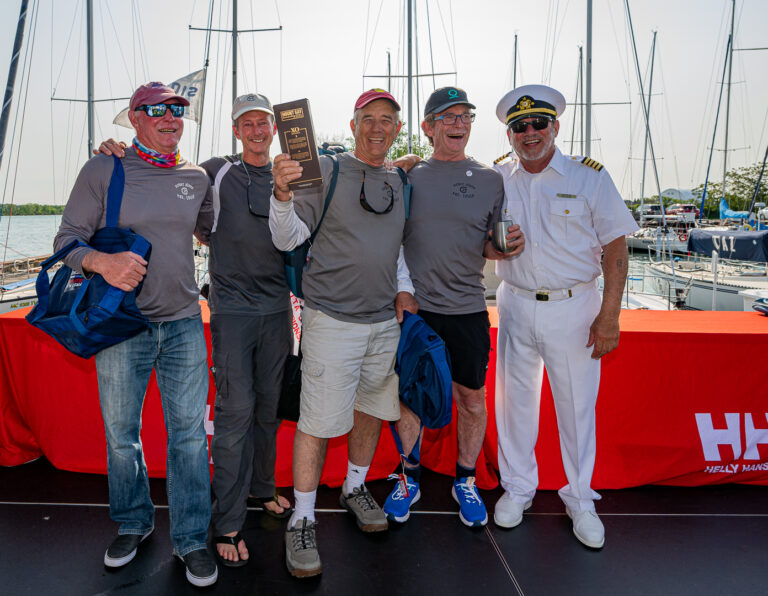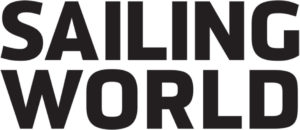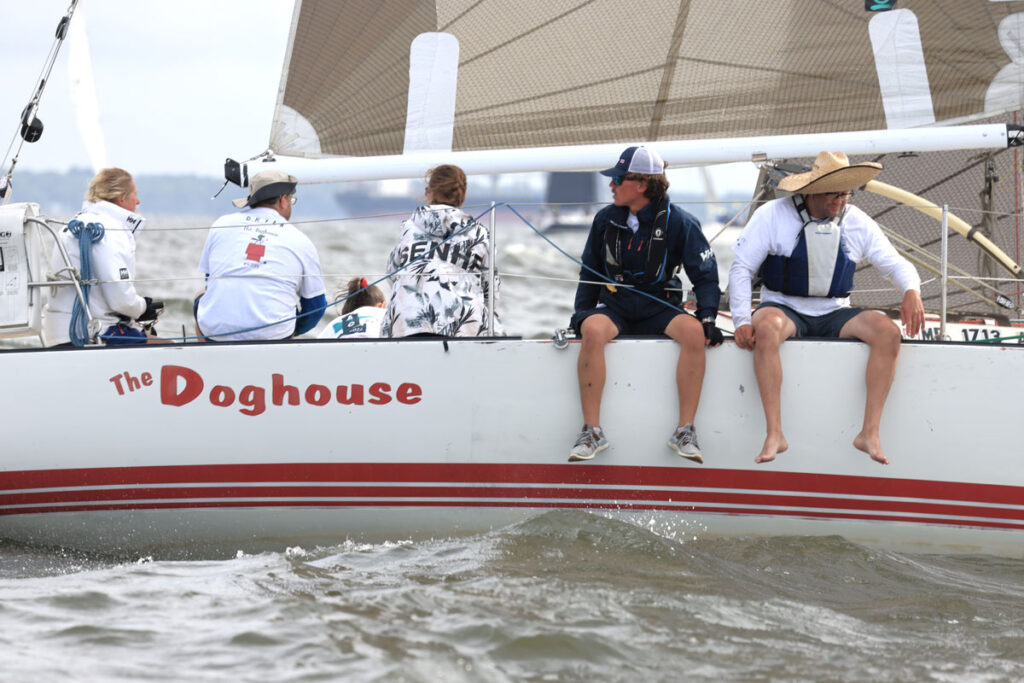
Air. Fuel. Spark. Whoosh.
And just like that, J/29 class racing has been reignited on the Chesapeake Bay. It’s been ages since these late-1980s vintage one-designs have met en masse, but at this year’s Helly Hansen Sailing World Regatta Series in Annapolis, seven J/29 owners were cajoled and herded from their slips by Liz Principe, the class’s new motivator-in-chief.
“There is a new energy among the owners,” Principe says. “And that’s really motivating me. It’s been at least 12 years, so we’re pretty stoked about what’s going on here.”
Principe, who hails from Cambridge, Maryland, and races on the shallow reaches of the Eastern Shore’s Choptank River, sailed as a teenager with her father, but it was passive. Only when she accepted an offer from her boss and was exposed to racing on a Tartan 10 did she realize what she’d been missing all along.
“They taught me the foredeck because I was light and athletic,” she says, “and everything about it was wonderful.”
Over eight immersive years in a sport that befits her energetic and results-driven personality, Principe relocated herself from the foredeck to the tiller when she was gifted a Catalina Capri 30. “We had some amazing wins with that boat,” she says, but last July, she purchased a masthead/outboard-model J/29, called it The Doghouse, and launched her “first real racing boat.”
This particular J/29 was discovered on the hard across the bay in Solomons, Maryland. The longer Principe longed for it, the lower the price kept dropping, until it finally hit her price point. It was in good shape, needing only the TLC common to balsa-cored boats of the late 1980s.
“Coming out of the Capri, the boat was seriously fast and fun,” she says.
Principe and her teammates promptly became a force in the Eastern Shore PHRF scene and, “When we started winning,” she says, “more people wanted to come and crew.”
Having too many crewmembers on call was a good problem to have, she says, but soon came her epiphany: “I said, ‘We have this great boat, so let’s go do something bigger with it.’”
Bigger being one-design racing, of course.
As commodore of the Eastern Shore Sailing Association, Principe tapped connections at sailing organizations up and down the Chesapeake, and social media outreach and emails allowed her to quickly connect with other J/29 owners to propose a simple goal of restarting one-design class racing in the US.
Responses from owners were universal: “They were all like, ‘Yeah! Let’s do it,’” she says.
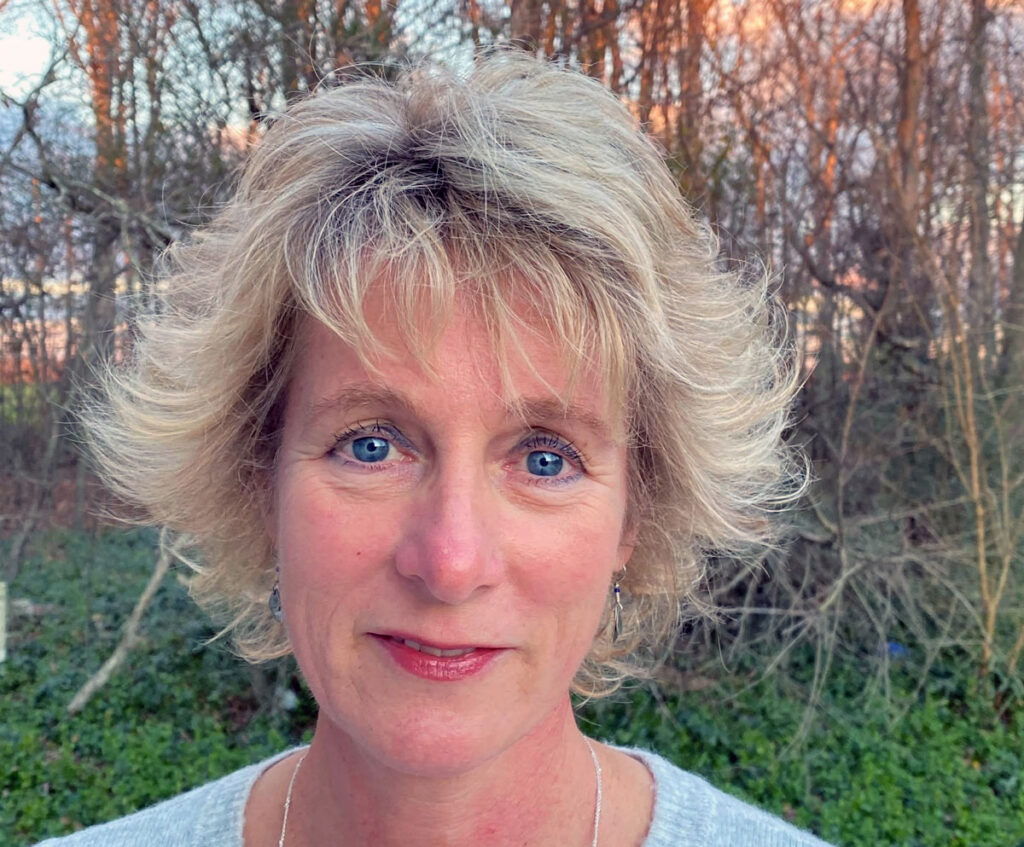
Hands went up not only in the Chesapeake, but from surprising locations afar as well—from owners in Texas, Ohio, New Jersey, New England and elsewhere. “They all wanted to restart this J/29 class, so it’s gone from being a Chesapeake thing to a national one,” she says. “It’s baby steps, but we’re getting there.”
According to J/Boats, Rod Johnstone introduced the J/29 in 1982 as a versatile, lightweight and upwind-capable race boat that possessed the best traits of the J/24 and the J/30. Before production ended in 1987, the final hull popped from the molds was No. 298. Principe admits she has no idea how many are still sailing and where.
With three boats traveling in from New Jersey’s Riverton YC for the Annapolis Helly Hansen Sailing World Regatta, Principe has been hustling to make the experience a positive one for the fleet, sourcing free housing and organizing informal low-cost gatherings, including an evening with Annapolis’ beloved sailmaker and storyteller Wilbur “Papa” Keyworth, a J/29 champion from the class’s formative years, whose primary advice to Principe is to “make it fun.”
“Back in the day, we had a lot of parties,” Keyworth says. The adventures he had with his J/29 Moonbeam is stuff of legends. “In the early days of the class everyone saw how much fun we were having racing in MORC. Eventually, we got a couple of one-design starts just like Liz is doing, and the class started growing from there. At one point, we had about 20 of them around here—and hosted the first North Americans in Annapolis in 1985.”
With fleets in Hampton, Virginia, and Cape May, New Jersey, Keyworth says, there was quite a bit of travel between the two locations as owners committed to sailing the big regattas of the mid-Atlantic, including Atlantic City Race Week. “At the peak of the class, we had about 15 boats in Cape May for the NAs,” Keyworth says. “One of the things that really kept the class going was the get-togethers—the cookouts and the socials—and Liz is grasping that and injecting it into the teams that will show up for this event.”
Fifteen or even 20 boats would be a pipe dream for Principe, so, for now, she’s plenty content with simply getting one-design J/29 racing off the ground again. “We will have seven on the line, and for the J/29 fleet and the first time, that’s pretty good,” she says.
While the Helly Hansen Sailing World Regatta Series may be the first one-design start in a long time, Principe says, there’s still much work to be done in reestablishing the semblance of an organized class. It’s a monumental task, but she’s not alone; her new friends from the Texas, Ohio and New England fleets are stepping up as well to advance Principe’s efforts.
“I think what happened to the class was that the skippers got older, and the boats did too. It requires a lot of dedicated crew, which I can relate to,” Principe says. “Finding six or seven crew can be a real challenge for some owners.”
The immediate goal is getting the formal class structure back up and running again, reaching out to owners and contacts to uncover idle boats and owners and re-engaging them. “I know there are some J/29s in Essex (Connecticut) on the hard,” she says, “so eventually, I’m going to go and find those and see if we can get them back out on the water and racing. Sometimes it’s just a matter of talking to the owners and showing them that there’s something happening. That’s the sales lady in me—it just takes getting feet on the ground, finding these people, and generating excitement.”
The J/29 is considered to be an excellent PHRF boat, and that’s where many of them have landed over the past few decades, which may complicate a pure one-design resurgence, but that’s a low-priority concern for Principe. They’re willing to overlook strict class-rules compliance for now. “In this first go-around, we won’t be picky. We’re just happy to have everyone out sailing together. It’s going to be a really cool event. The other owners are so happy to have this re-engagement happening.”
